#drury lane
Text
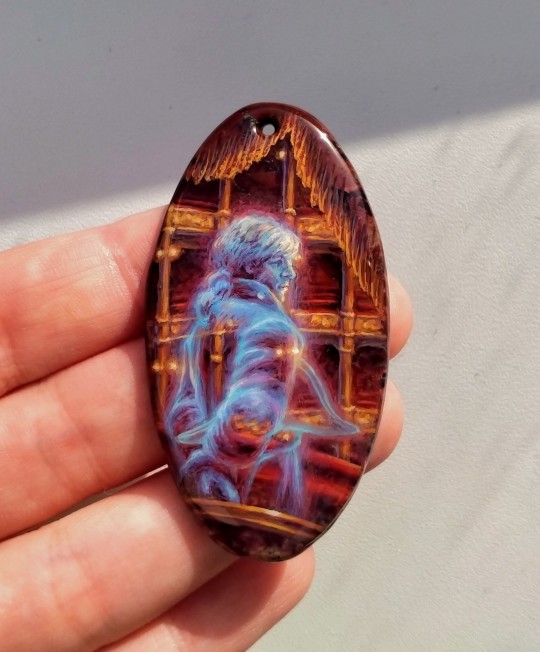

One of the famous ghosts of Drury Lane theatre, known during his life as Lt. A. Kennedy of the Royal Navy. An interpretation of the Man in Grey inspired by @professorlehnsherr-almashy 's post about Archie Kennedy haunting Drury lane. Specifically, the admiralty box. Ouch
#hornblower#horatio hornblower#archie kennedy#jamie bamber#ghost#haunted#theatre#drury lane#miniature#painted stones#jasper#rock painting#minerals#painted rocks#pendant#gemstone#my art
417 notes
·
View notes
Text

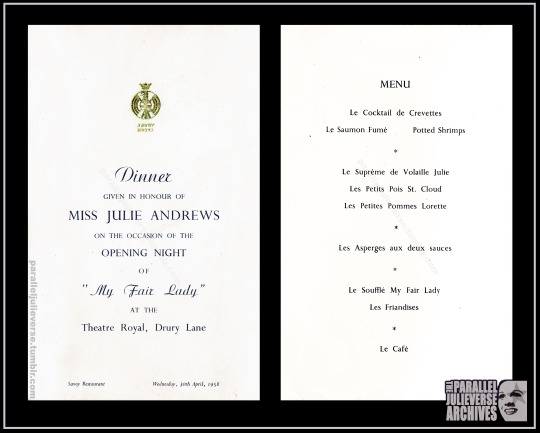
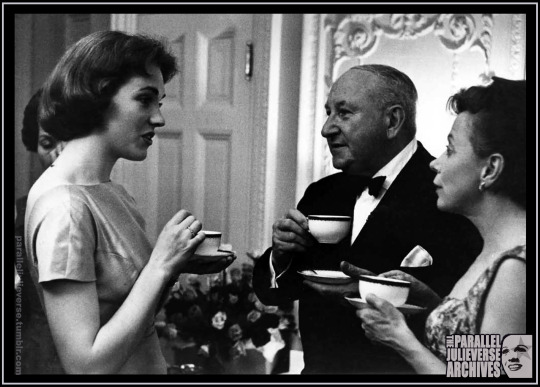




From the Archives: This Day in Julie-history
My Fair Lady Opening Night Supper
Savoy Hotel, London, 30 April 1958
66 years ago, Julie Andrews made her triumphant bow in the London opening of My Fair Lady at the Theatre Royal Drury Lane. Following the opening night performance, after-show parties were arranged at various venues around the West End.
Producer Herman Levin hosted a party at the Dorchester which was attended by Stanley Hollaway and Cecil Beaton. Rex Harrison was guest at a supper held by the US Ambassador, Jock Hay Whitney and wife at Wingfield House. Hugh "Binkie" Beaumont, head of Tennent theatres, hosted another party at his home in Westminster (London 1958, p.3).
True to homely form, Julie Andrews opted for a small private party at the Savoy Hotel attended by family and friends including Claire Bloom and Maggie Smith (London 1958, p.3). Guests dined on a special menu designed by the chefs of the Savoy Restaurant with bespoke dishes such as Le Suprême de Volaille Julie and Le Soufflé My Fair Lady.
Life magazine reported that Julie was "wrung out" as she and her family nervously awaited the critics' verdict. "But when the papers came, she was suddenly wide awake, on her feet and ready to dance all night" (Thompson 1958, p. 24).
Sources:
London, John (1958). 'It's My Fair Triumph at the Lane.' Daily News. 1 May: p. 3.
Thompson, E.K. (1958). 'Lady conquers London." Life. 12 May, pp. 20-25.
©2024, Brett Farmer. All rights reserved.
2 notes
·
View notes
Text
Eighteen-Forties Friday: A Night at the Opera
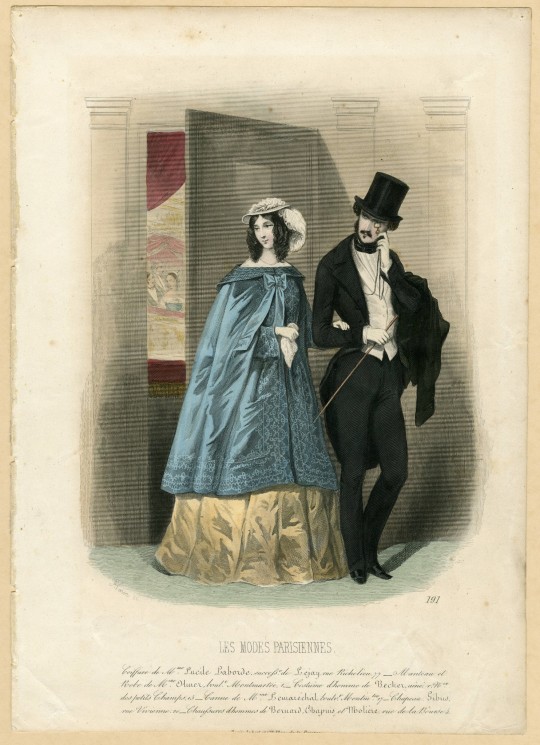
A Night at the Paris Opera, Autumn 1846. Fashion plate in Les Modes Parisiennes (The Claremont Colleges collection).
Today's edition of Eighteen-Forties Friday is inspired by Harry Goodsir, naturalist and assistant surgeon of the 1845 Franklin expedition, who found time to see an opera before his departure to the arctic:
This letter has been delayed till this day the 8th: in consequence of my being in London where also it is now Posted I have many things to do so cannot at present at least write much to any one. There is a letter lying for me at the Ship I believe but do not know from whom. I go today to get my outfit &c: bedding &c: Went to Drury Lane last night to hear Duprez as Arnold in William Tell.
— Harry Goodsir to Jane Ross Goodsir [sister], 5 April 1845. Quoted in May We Be Spared to Meet on Earth: Letters of the Lost Franklin Arctic Expedition, edited by Russell A. Potter et al.
I went looking for a suitable picture of the famous tenor Gilbert Duprez in William Tell, only to find that Russell Potter stole a march on me in a blog post from 2020. (This also shows how long the Franklin expedition letters book has been in the works and openly discussed).
Here's another 1845 opera that played on Drury Lane, "Maritana", set during the reign of Charles II of Spain (The Illustrated London News 22 November 1845, Victoria & Albert Museum collection):

The historical costuming and theme of both Maritana and William Tell is extremely 1840s, a decade that loved its ye olde fashion cues. q.v. Prince Albert in pseudo-medieval fancy dress costume, and this cartoon about historical fashion at an 1844 masquerade ball.
Back to Harry Goodsir—his trip to the opera suggests that he had proper evening dress (even if his naval uniform wasn't ready). Handbook of English Costume in the 19th Century by C. Willett and Phillis Cunnington describes men's evening dress 1840-1850:
Dress coat, black, blue with gilt buttons, brown or claret-coloured. Waistcoat [single breasted], as described; under-waistcoat usually coloured. Black trousers or pantaloons. Dress boots or pumps with bows or buckles, the straps of trousers passing under the foot inside the shoe. Black silk stockings. Primrose-coloured or white gloves.
It is the equivalent to modern white tie dress code, as the fashion plate shows. Going to the theatre not in evening costume was certainly possible, although a faux pas as outlined by Albert Smith in The Natural History of the Gent (1847).
#1840s#fashion history#harry goodsir#franklin expedition#may we be spared to meet on earth#victorian#fashion#theatre#drury lane#evening dress#men's fashion#historical men's fashion#early victorian era#Eighteen-Forties Friday#polar#dress history#i feel that the formality of 1840s evening dress makes it more equivalent to white tie than black tie#even if you could mix in some coloured pieces (coloured stocks were discouraged)#the amount of 1840s men screaming about proper evening costume (and looking down on men not wearing it) is off the charts
74 notes
·
View notes
Text

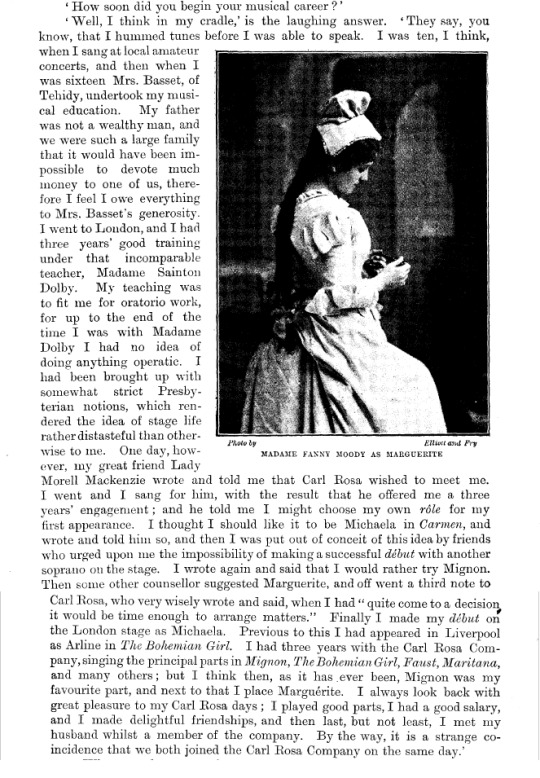



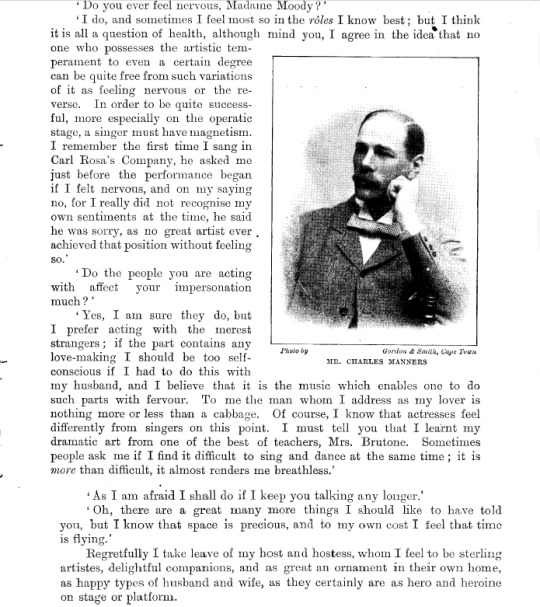
Fanny Moody – The Cornish Nightingale
Dame Fanny Moody (1864-1945) of Redruth was known as ‘The Cornish Nightingale’. Her father could, it was said, play any instrument he had ever seen. Her mother was a pianist, and their large family were exceptionally musical, in particular the daughters Fanny (Francis), Lily (1867-1950), Mabel (1874-1952) and Hilda (1876-1961). Newspaper reports show that all the sisters performed locally as young women. Fanny went on to become one of the great singing stars of her age. Hilda joined the D’Oyly Carte Opera Company in 1896, and later toured with her elder sister’s opera company. Lily, mezzo soprano, sang with J. W. Turner’s English Opera Company (1887-1902).
Fanny, allegedly seen dancing on a shop counter when young, became a pupil of Robert Heath of Redruth. Her first reported performance was in Ponsanooth on 26 March 1879 at the age of 14. Later that year Fanny’s mother died and her father was left with seven children. Nevertheless, in the winter of 1879/80, Fanny performed over a dozen concerts, mostly in Redruth, but also in Penzance and Falmouth. This intensive pattern was repeated in the next two winters, during which she built a large local following.
Her talent was recognized by Lady Mary Basset of Tehidy, who in late 1881 paid for her to train in London at the Vocal Academy of the renowned Mme. C. H. Sainton-Dolby. Fanny made her London début at the Steinway Hall, Seymour Street in June 1883. In April 1884, with other students, she gave a concert in Newcastle. All was loyally reported in Cornish newspapers.
In Newcastle she was heard by Charles Hallé, who offered her a series of return bookings. Through these she met Carl Rosa, manager of a prestigious opera company, and when asked by him to sing a ‘top C’ she gave him a ‘top D’. She made her début with the Carl Rosa Company in Liverpool on 15 January 1887, in The Bohemian Girl. Later that year Fanny’s father James died, but having seen three of his daughters on their way to operatic success. In 1889 Fanny, her fiancé, the noted bass, Charles Manners, and her sister Lily made a triumphant return to The Druid’s Hall, Redruth. The packed event was a both a celebration of Fanny’s success and of her Cornish roots.
In 1892 Charles Manners and Fanny were married. Fanny went from success to success as an operatic soprano. In 1892 she and her sister Lily sang in the first English performance of Tchaikovsky’s Yevgeny Onegin. Fanny sang many roles, including Wagner, but she was most suited to those like Cio-Cio-san, the tragic heroine of Puccini’s Madam Butterfly. Later, she and her husband formed the Moody-Manners Opera Company which operated from 1898 to 1916.
Most of Fanny’s performing life was spent touring Britain but she also travelled abroad, notably to North America and South Africa. There in 1897, after a concert, expatriot Cornish admirers followed her back to her hotel. A newspaper reported ‘There was an assemblage of enthusiastic but strangely silent and peaceful Cornishmen; this congregation of robust Romeos waited for their Juliet to appear upon the balcony…To the silent she sang Cornish songs. And as she sang, these big men of Cornwall wept.’ She was presented with a tiara with the Cornish coat of arms picked out in diamonds, which was donated for auction in the Second World War with the proceeds going to the Red Cross.
Although she travelled the world Fanny was still seen as a ‘Cornish maid’ and regularly reported in a positive, almost avuncular way by Cornish papers. Her reputation, repertoire and audience were international, but her identity was Cornish, and her success, and that of Lily and Hilda, grew from the Cornish musical environment.
Laura Alex Smith published an interview with Fanny Moody in the Cornish Magazine in 1898 which provides an insight into the singer and her world.
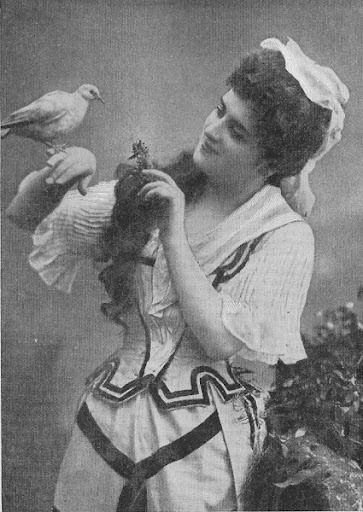
#classical music#opera#music history#bel canto#composer#classical composer#aria#classical studies#maestro#chest voice#Fanny Moody#The Cornish Nightingale#The Nightingale#Carl Rosa Opera Company#Moody-Manners Opera Company#Drury Lane#classical musician#classical musicians#classical history#opera history#historian of music#history of music#musician#musicians#diva#prima donna
4 notes
·
View notes
Text
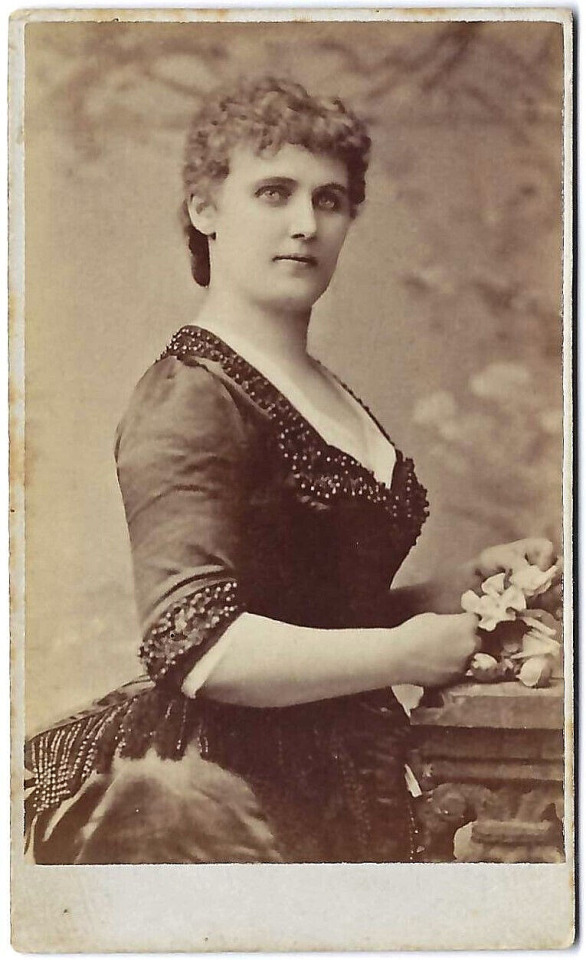
#christina nilsson#christine nilsson#christine daaé#opera#singer#bel canto#soprano#dramatic coloratura soprano#the nightingale#swedish nightingale#swedish opera singer#the phantom of the opera#le fantôme de l'opéra#gaston leroux#paris opera#her majesty’s theatre#drury lane#covent garden#royal albert hall#royal opera house#the metropolitan opera#mariinsky theatre#photography#classical singer#classical singing#classical music#music history#classical studies#diva#aria
14 notes
·
View notes
Photo

Lost London: Walking the Covent Garden Drainage Ditches
Part 2: The Cock and Pye Ditch
Up until the 17th Century, St Giles-in-the-Fields was just a small group of houses in the grounds of a leprosy hospital; between these dwellings were marshy fields known, perhaps unimaginatively, as Marshland, surrounded by a rectangular drainage ditch. These fields were covered by the development known as Seven Dials in the 1690s, and the fields and ditch would in time take on the name of Cock and Pye – the origin of which will become clearer as the walk along this lost watercourse continues.
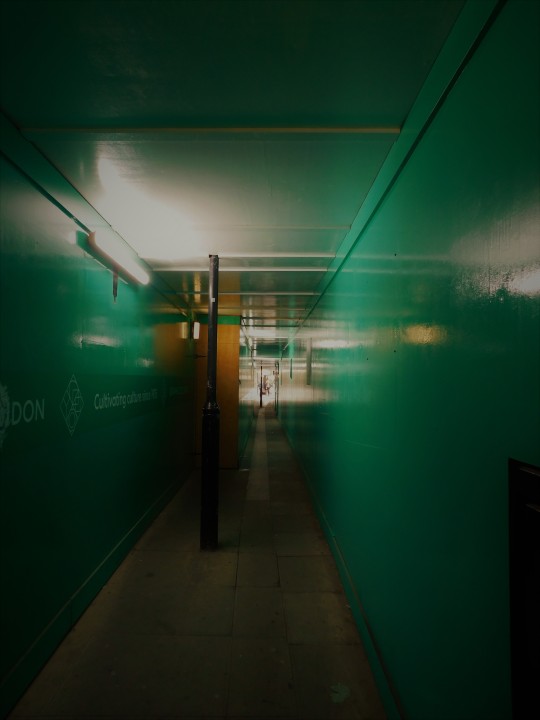
The route from Drury Lane to Seven Dials requires a walk through an unnamed and (at time of walking) well-enclosed alleyway, leading onto Shelton Street. My guidebook says a small gradient can be found on this road where the subterranean waters of the Cock and Pye flow towards the Bloomsbury Ditch, but this is somewhat difficult to detect.
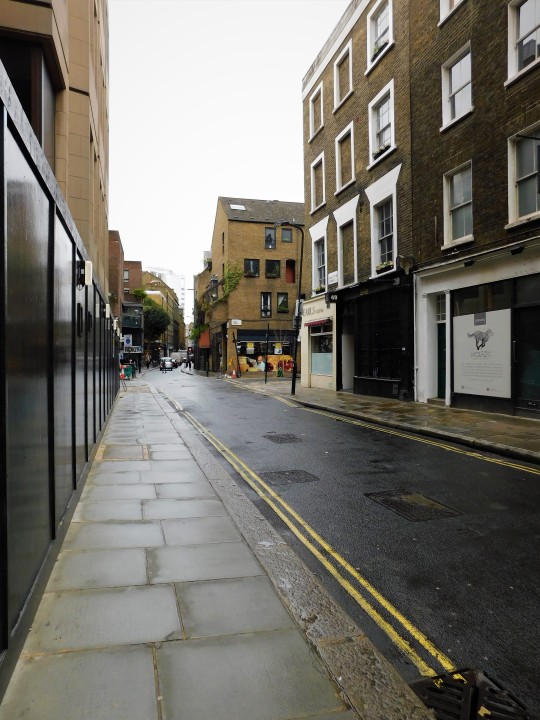
At the junction of Shelton Street and Neal Street, my walk turned right, in order to follow the eastern edge of the Cock and Pye’s rectangular outline (the ditch also continues straight ahead, so the circuit could in theory be completed in either clockwise or anticlockwise fashion). Neal Street takes it name from Thomas Neale (forgetting the last “e”), the Stuart courtier who was responsible for the development of Seven Dials.
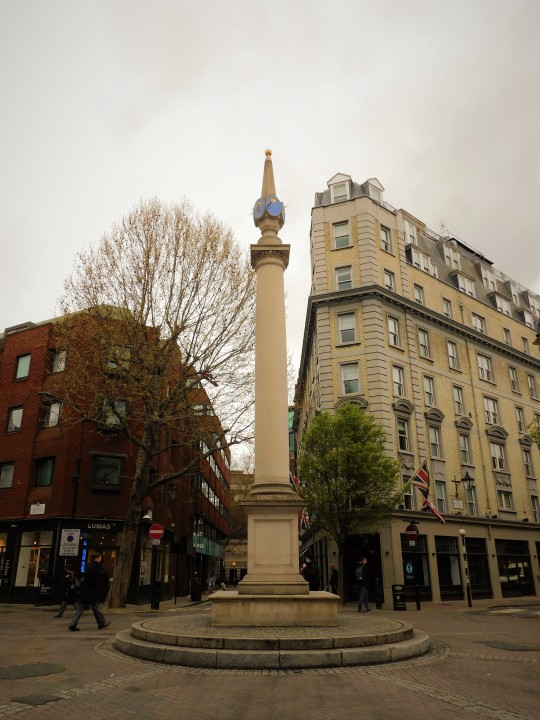
As Neal Street is fairly typical of the area – expensive shops and pricey bars, cafés, and restaurants – a diversion to the centre of Seven Dials is recommended. Here, the seven roads radiate out from a central column, which surprisingly only has six sundials; the central column and surrounding roundabout functions as the seventh. The original column was erected as part of the initial development, though was taken down in 1773; the story that it was pulled down by a mob looking for gold rumoured to be buried beneath it are just an urban legend. The current column is a replica installed in the 1980s.

Turning back to Neal Street, the route then turns left at Shaftesbury Avenue. It is hard to imagine that the surrounding streets here were once the infamous Rookery of St Giles, some of the worst slums in the country. During the 18th Century, at the height of the gin craze, the squalid conditions of the streets of St Giles inspired Hogarth’s etching Gin Lane. Nowadays the most prominent artwork on Shaftesbury Avenue is Drama Through the Ages, a frieze on the Odeon cinema, originally the Saville Theatre. Very few traces of the Cock and Pye Ditch are left, though a small grate at the junction of Shaftesbury Avenue and Mercer Street reveals trickling water below.

The third side of the rectangle is completed by walking along West Street, apparently so named because it was the western boundary of the Cock and Pye fields (a convention not applied to the other three sides though). At the time of walking, the Ambassadors Theatre was also running a rather appropriately named play; its more famous neighbour, St Martins Theatre, has meanwhile been showing the same play, Agatha Christie’s The Mousetrap, for 70 years.
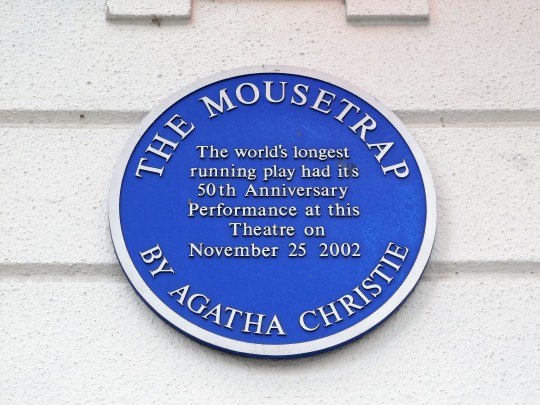
We shall end this section of the walk where West Street meets Upper St Martin’s Lane. It was in this vicinity that the Cock and Pye Inn once stood, and gave its name to the surrounding fields and ditch. Some say that the inn gained its name from serving elaborate peacock pies, though more likely it was simply named after a cock and a magpie – at the time, spelt magpye.
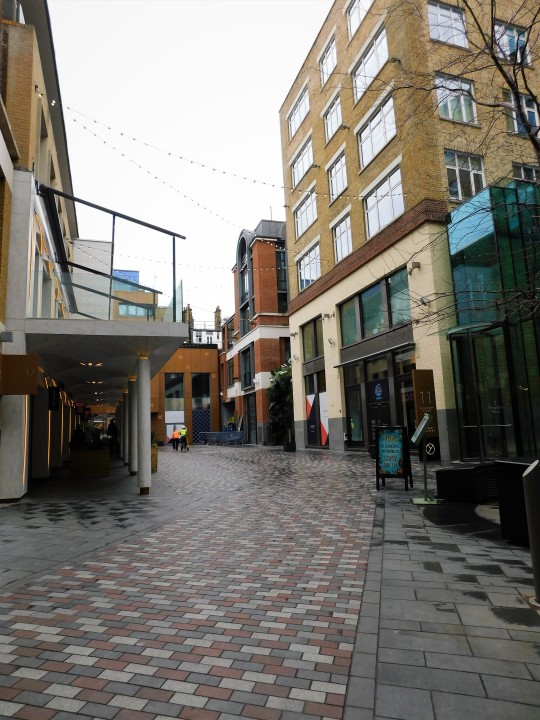
#london#uk#england#walk#covent garden#seven dials#ditch#drainage#watercourse#river#stream#cock and pye#rectangular#st giles#drury lane#neal street#sundial#sundials#column#shaftesbury avenue#rookery#slums#gin craze#gin lane#art#cinema#theatre#theatres#agatha christie#the mousetrap
21 notes
·
View notes
Text


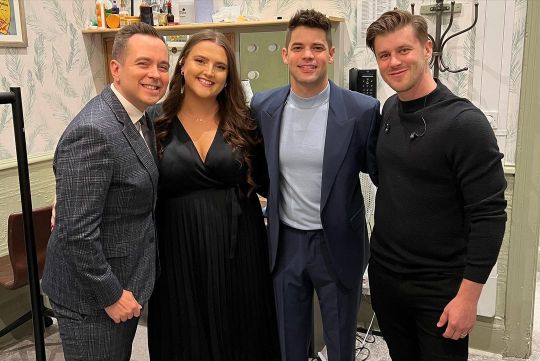




Benjamin Rauhala and Jeremy Jordan recently performed at the Theater Royal Drury Lane on London's West End. Photos/Videos weren't allowed for the most part, but these backstage photos (IG: @brauhala) are fabulous and have an excitement of their own. The last photo with Andy Mientus is sure to excite Smash fans like myself. He joined Jeremy on stage for a number from "Rent". Below is part of Ben's recent Instagram post in which he speaks about his experience in London.
REPOST: @brauhala (IG)
@brauhala: Did Judy know she was doing "Judy at Carnegie Hall" the magical night that it happened? Do we ever notice the histories of our lives being formed as they happened, or is it always in retrospect? I asked @jeremymjordan that before walking on stage for our second show at @thelaneldn. We've spent so long being the young people climbing our way up what if this is the peak, and this is the prime of our careers and we hadn't quite noticed yet? Then it was time to embrace every moment, because playing those two nights on the West End at the Theater Royal Drury Lane was unmistakably a career pinnacle, and the love we exchanged with those two sold-our crowds is a feeling I'll never forget, and getting to share it with your best friend? It's one of the greatest gifts I could be given.
#benjamin rauhala#ben rauhala#jeremy m jordan#jeremy jordan#london west end#theater royal#drury lane#theater royal drury lane#katie ramshaw#luke baker#andy mientus#smash#alex stoll#samantha barks
15 notes
·
View notes
Text

For years, Jace (@churchyardsale) and I have talked about how cute it would be if the Sandman and the Muffin Man were boyfriends, and we’ve taken time to develop this little mythos whenever we’re talking about having a hard time falling asleep. I finally wrote a poem about them, and then mailed it to Jace as a surprise. Now that it’s been delivered, I can share online. I only snapped one quick picture that isn’t very easy to read, so the full text is below. (Full disclosure: I wrote this in like, half an hour, and so it isn’t exactly great poetic literature, but I do think it’s cute.)
DRURY LANE
With a kiss and a sigh, he gives his goodbye -
and heaves a rucksack over his shoulder.
The sun’s finally set, the night calling him yet,
so his eyes alight and then smolder.
Reaching into the pack, which sat heavy and fat,
his hand emerged encrusted with gold –
for he was the Sandman, and this was his task
to spread sleep and let good dreams unfold.
.
Yet every night he’s away, he leaves slightly dismayed
knowing his husband is left all alone –
but the baker frets not, and waves off those thoughts
with “this muffin man’s happy at home!
I’ll start proofing the dough, and before you know,
the sun will creep back through the sky.
With piping hot ovens, and treats baked by the dozen,
the morning will swiftly fly by.”
.
And when noon comes, the baker dusts away crumbs,
locks the door, turns the sign, climbs the stairs.
With nary a sound, he smiles and lies down
next to the slumbering Sandman who’s there.
In a languid twist, the dreamer flicks his wrist,
sprinkling sleep across his sweet Muffin Man –
The rosy-cheeked lovers cuddle under the covers,
holding magic in both of their hands.
#Sandman#Muffin Man#Drury Lane#poem#poetry#pometri#not the graphic novel Sandman#the classic one#or like the one from Dreamworks Rise of the Guardians lmao
3 notes
·
View notes
Text
Het X-Mysterie / Barnaby Ross
Drury Lane #1
"Ik begrijp u niet goed, Mr. Brooks," prevelde Lane. "In de gegeven omstandigheden ben ik vaster dan ooit besloten om de safe te openen. U weet natuurlijk, dat ik de daarvoor nodige macht bezit. Zou u de combinatie aan de district-attorney mededelen?" Hij glimlachte, maar zijn ogen zagen heel goed hoe de kaakspieren van de advocaat zich samentrokken.
"Als u het testament wilt zien," begon Brooks flauwtjes, "dat is werkelijk een volkomen officiële kwestie..."
"Maar het gaat niet om het testament, Mr. Brooks. Tussen twee haakjes, weet u wat er in de safe zit? Er moet iets zeer gewichtigs in zijn, anders begrijp ik al die geheimzinnigheid niet."
"O nee, nee! Ik heb altijd vermoed, dat er iets bijzonders in zat, maar ik ben natuurlijk nooit zo brutaal geweest er de Witt naar te vragen."
"Ik geloof, Mr. Brooks," zei Lane op een heel andere toon, "dat het het beste is, dat u mij de combinatie geeft."
Brooks aarzelde, wendde zijn blik af... Dan haalde hij zijn schouders op en prevelde een aantal cijfers. Lane keek ernstig naar zijn lippen, knikte, ging zonder verder iets te zeggen in de bibliotheek terug en sloot de deur voor Brooks' neus.
De oude acteur liep vlug naar de safe. Hij manipuleerde met de wijzerplaat. Toen de zware kleine deur openzwaaide, bleef hij vol verwachting even staan en bekeek het binnenste ervan, zonder iets aan te raken...
Een kwartier later sloeg Mr. Drury Lane de deur dicht, draaide de wijzerplaat rond en ging naar de lessenaar terug. In zijn hand had hij een kleine enveloppe.
Drury Lane, een zeer vermogend acteur die zich heeft teruggetrokken van het toneel toen hij doof werd, wordt door de politie om advies gevraagd bij de moord op een aandelenmakelaar. Het blijft niet bij die ene moord, en de politie zit met de handen in het haar. Gelukkig kan Drury Lane zo goed liplezen, dat zijn doofheid op geen enkele manier zijn onderzoek bemoeilijkt en weet hij bewijzen boven water te krijgen -- maar niet te delen met de politie of openbaar aanklager! -- die hem uiteindelijk in staat stellen om te laten zien hoe slim hij is.
Er zijn vier Drury Lane boeken geschreven door Daniel Nathan en Manford Lepofsky, die meer bekendheid hebben vergaard onder hun andere pseudonym, Ellery Queen.
0 notes
Text

42nd Street, Drury Lane, London
0 notes
Photo
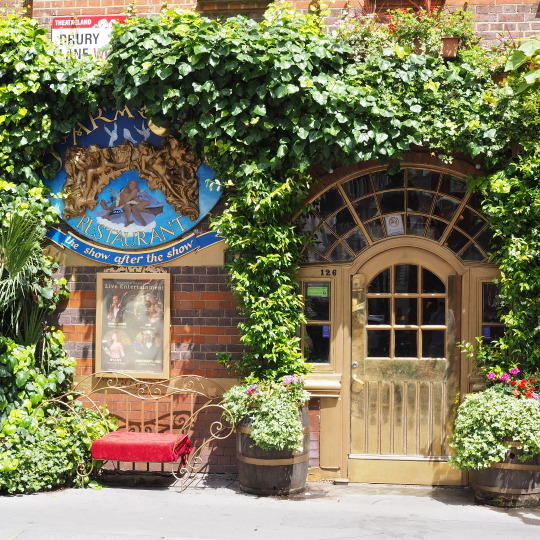
Drury Lane, Theatreland.
1 note
·
View note
Text
An Apology for the Life of Colley Cibber
An Apology for the Life of Colley Cibber
November 6 was the natal day of Colley Cibber (1671-1757), Poet Laureate of England, playwright, and one of the first of the long chain of actor-managers that would subsequently include David Garrick, Henry Irving, and Herbert Beerbohm Tree.
Lovers of English theatre history know the name well for he was a major figure therein, for he led the important Theatre Royal, Drury Lane from 1710 to…

View On WordPress
1 note
·
View note
Text
Jean De Reszke sings O Paradis from Meyerbeer's L'Africaine (March 15, 1901)
This is a live recording at the Metropolitan Opera (with very bad quality). The cast also included Lucienne Breval as Selika, Suzanne Adams as Ines, Giuseppe Campanari as Nelusko, Marcel Journet as Pedro, Eugene Dufriche as Diego, Jacques Bars as Alvar, Pol Plancon as Grand Inquisitor and High Priest, Mathilde Bauermeister as Anna and Aristide Masiero as Usher, conducted by Philippe Flon.
#classical music#opera#music history#bel canto#composer#classical composer#aria#classical studies#maestro#chest voice#Jean De Reszke#dramatic tenor#tenor#Metropolitan Opera#Met#L'Africaine#Giacomo Meyerbeer#Theatre Royal#Drury Lane#Covent Garden#Royal Opera House#classical musician#classical musicians#classical history#history of music#historian of music#musician#musicians#diva#prima donna
5 notes
·
View notes
Text

Artist: Justus Bergman
#Artist#Justus Bergman#Christina Nilsson#Christine Nilsson#Opera#singer#opera singer#composer#the nightingale#swedish nightingale#nightingale#Paris Conservatoire#19th century#bel canto#paris opera#Drury Lane#covent garden#royal albert hall#royal opera house#met#metropolitan opera#metropolitan opera house#her majesty’s theatre#mariinsky theatre#soprano#coloratura#coloratura soprano#dramatic coloratura soprano#painting#christine daaé
8 notes
·
View notes
Text

Gosho's Detective Picture Book # 35:
Most people know of Ellery Queen (the author, who is really a team of two cousins Frederic Dannay and Manfred B. Lee) by their famous eponymous detective. However, the duo has also written four novels as Barnaby Ross between 1932 and 1933. Interestingly, before the identity of the authors were revealed, the cousins staged a rivalry between Ellery Queen and Barnaby Ross, with each cousin playing one author. The detective in those Ross novels is not really a detective, but a retired Shakespearean actor called Drury Lane.
Drury Lane is a bizarre man who lives in a castle called The Hamlet where he employed many old servants with bizarre names like Quacey and Falstaff. His castle is also weirdly surrounded by a miniature Elizabethan village and the inhabitants are paid by Lane himself. Despite his 60 years of age at the beginning, he looks younger and is quite fit, and with the help of Quacey he dons disguises to gather information. Since these novels were written in the beginning of Ellery Queen's career, there are some development that requires rendering of disbelief on the reader's part like Lane being able to perfectly replicate the voice of the victim whom he has never met. His deductions are always detailed, sometimes excessively so, and he considers all explanations of an event even if they are unlikely. On the way, he was helped by New York District Attorney Bruno, Inspector Thumm, and his daughter the intelligent Patience Thumm.
All four novels follow complicated mysteries that Lane and his friends must unravel, with dead bodies at every turn and surprising resolutions. Drury Lane's fate in Drury Lane's Last Case is one of the most surprising endings in that era of detective fiction, reminiscent of Curtains: Poirot's Last Case, which grips the reader because we have gotten to know Lane over the course of his quadrilogy. The end of the detective is shocking, but looking back there has been groundwork laid from the conclusion of The Tragedy of Y, it just was not strong enough for the ending to feel earned.
Out of the four books, I would recommend The Tragedy of Y, which has one of the most ingenious solution to a clue paired with one of the saddest endings.
#barnaby ross#ellery queen#drury lane#gosho aoyama's detective picture book#gosho aoyama's mystery library#detective conan
1 note
·
View note
Text

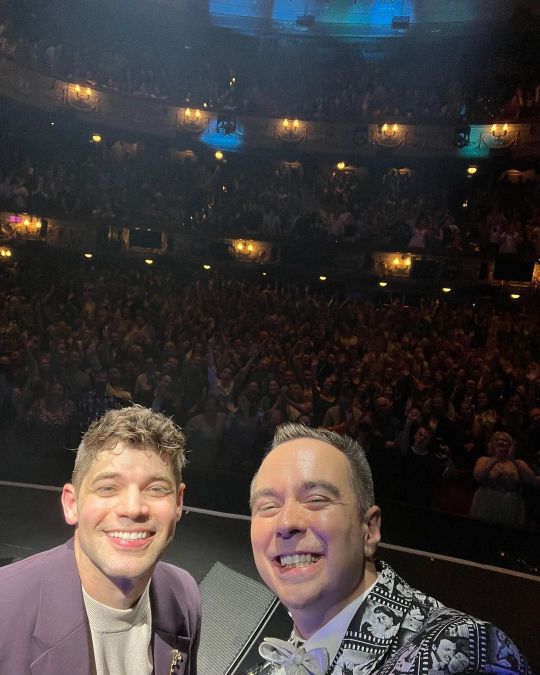
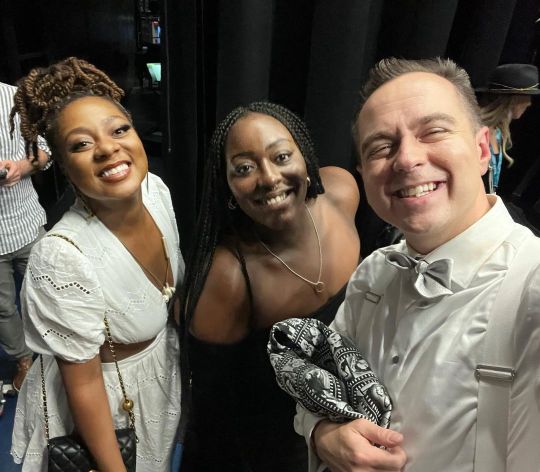

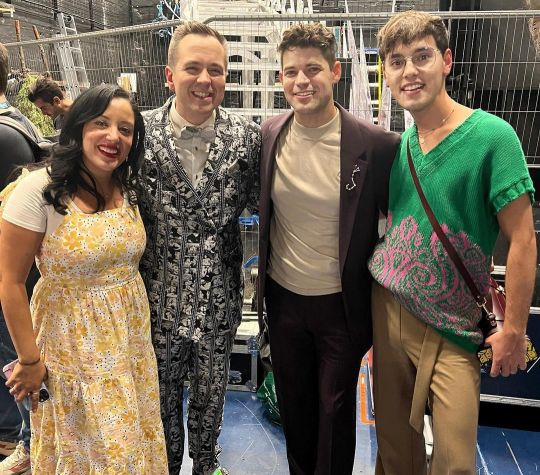





REPOST: @brauhala (IG)
@brauhala: London is for friendship! 🇬🇧 Thank you to all of these legends making me and jeremymjordan feel so loved at Drury Lane! 🥰 I love you all to bits, and I'm thinking we should all get together to sing again sooner than later, no?! 💜😉 @f_w_live
#ben rauhala#benjamin rauhala#jeremy jordan#jeremy m jordan#drury lane#theater royal drury lane#london#london west end
12 notes
·
View notes